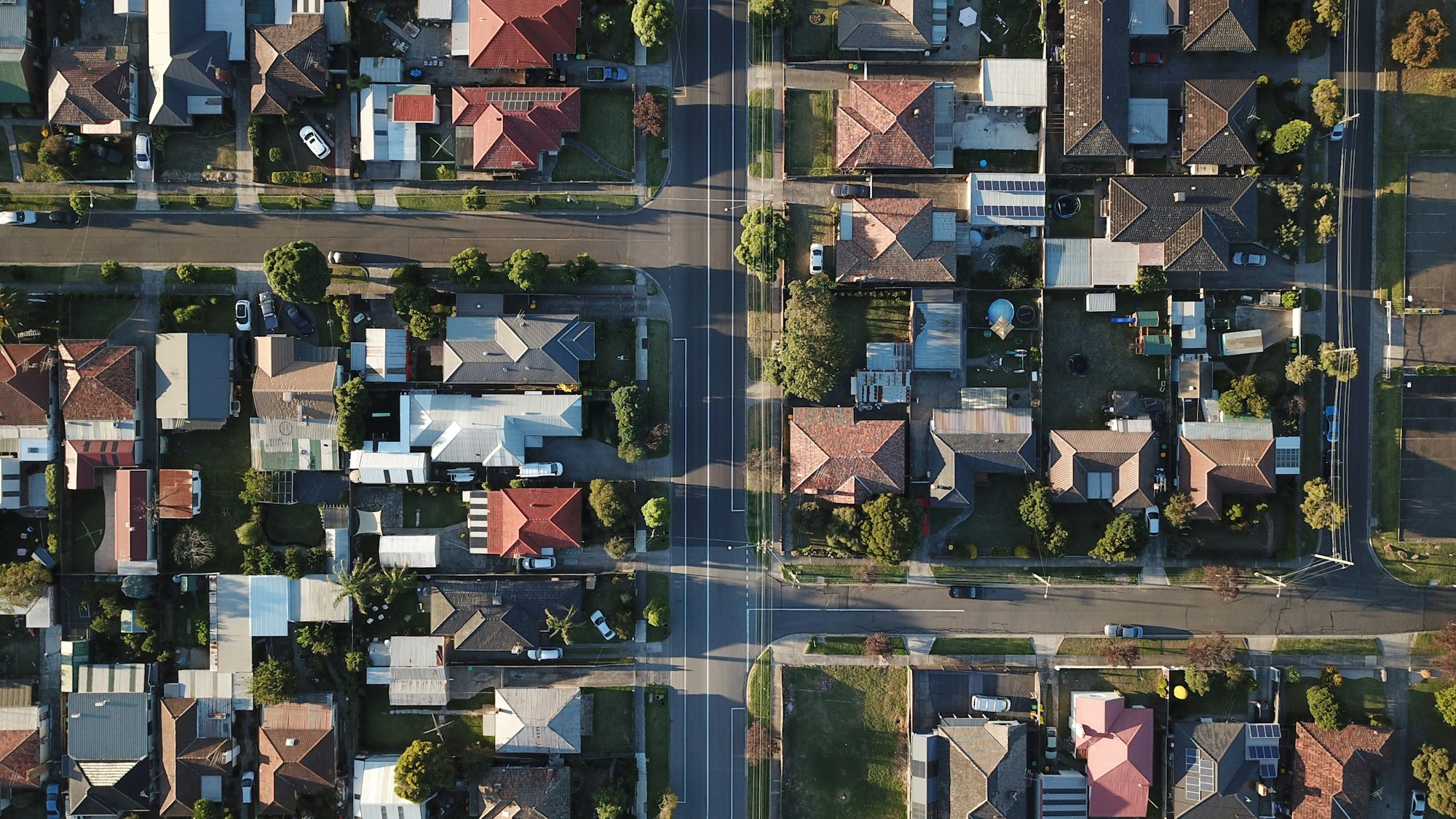The Decline of Local Manufacturing in Australia
Imagine a time when Australia's suburbs buzzed with the sounds of factories—machines humming, workers collaborating, and goods being produced right here on our soil. Back in the 1960s, manufacturing was a cornerstone of our economy, contributing around 25% to the nation's GDP. Fast forward to today, and that figure has dropped to just over 5% .
So, What Happened?
Several factors have contributed to this decline:
- Globalisation and Cheaper Imports: As trade barriers lowered, Australia faced stiff competition from countries with lower production costs.
- Policy Shifts: Reductions in tariffs and changes in government support made it challenging for local manufacturers to compete.
- Technological Changes: Automation and advancements in technology altered the manufacturing landscape, requiring new skills and investments.
Why Does This Matter?
The decline isn't just about numbers; it's about livelihoods and national resilience:
- Job Losses: Fewer manufacturing jobs mean fewer opportunities for skilled and semi-skilled workers.
- Economic Vulnerability: Relying heavily on imports can expose us to global supply chain disruptions, as seen during events like the COVID-19 pandemic.
- Loss of Expertise: As industries shrink, so does the knowledge base, making it harder to revive sectors in the future.
The Housing Affordability Crisis
Imagine this: you're a young Australian, working hard, saving diligently, and dreaming of owning your first home. Yet, despite your best efforts, the goal seems to drift further away each year. This isn't just a personal struggle—it's a national crisis that's affecting millions across the country.
What's Going On?
In 2025, the dream of homeownership feels increasingly out of reach for many Australians. Here's why:
- Skyrocketing Property Prices: Over the past few years, house prices have surged dramatically. In cities like Sydney and Melbourne, median house prices have climbed well over the million-dollar mark, making it nearly impossible for average earners to enter the market.
- Stagnant Wages: While property prices soar, wage growth has remained relatively flat. This disparity means that even as people save, their purchasing power diminishes in comparison to the rising costs.
- Rising Interest Rates: To combat inflation, the Reserve Bank has increased interest rates, leading to higher mortgage repayments. For many, this translates to dedicating a significant portion of their income just to service a loan.
- Limited Housing Supply: Australia is facing a significant housing shortage. In 2024, the country built 62,000 fewer homes than needed to accommodate population growth, exacerbating the supply-demand imbalance.
The Human Impact
These factors aren't just numbers on a page—they have real consequences:
- Delayed Life Milestones: Many young Australians are postponing major life events like marriage or starting a family due to housing insecurity.
- Increased Rental Stress: With home ownership out of reach, more people are renting, leading to heightened demand and, consequently, increased rental prices. This puts additional financial strain on households.
- Mental Health Concerns: The stress of housing instability can lead to anxiety, depression, and a sense of hopelessness among affected individuals.
Why Should We Care?
Housing affordability isn't just a concern for those directly affected; it has broader implications:
- Economic Productivity: When people spend a large portion of their income on housing, they have less to spend elsewhere, impacting overall economic growth.
- Social Cohesion: Housing stress can lead to increased social inequality, as the gap widens between those who can afford homes and those who cannot.
- Future Generations: If current trends continue, future generations may find it even more challenging to secure stable housing, perpetuating a cycle of disadvantage.
Linking Manufacturing to Housing Affordability
When we think about housing affordability, manufacturing might not be the first thing that comes to mind. But there's a strong connection between the two, and understanding this link can shed light on potential solutions to Australia's housing crisis.
Building Materials: The Cost Factor
A significant portion of construction costs comes from building materials like steel, timber, and concrete. When these materials are imported, prices can fluctuate due to global market changes, shipping costs, and currency exchange rates. By producing more of these materials locally, we can stabilise prices and reduce construction costs, making homes more affordable.
Prefabrication: Speeding Up Construction
Local manufacturing enables the production of prefabricated building components. These are sections of a building made off-site and then assembled on-site, significantly reducing construction time. Faster construction means more homes built in less time, helping to address housing shortages.
Job Creation: Boosting the Economy
Revitalising manufacturing creates jobs, not just in factories but also in related sectors like transportation, logistics, and retail. More employment opportunities lead to increased household incomes, enabling more people to afford homes.
Economic Stability: A Stronger Foundation
A robust manufacturing sector contributes to a more balanced and resilient economy. It reduces reliance on volatile sectors like mining and provides a steady source of income and employment. Economic stability is crucial for maintaining affordable housing markets.
Enhancing Economic Resilience Through Manufacturing
When we talk about economic resilience, we're essentially discussing our nation's ability to withstand and recover from financial shocks. A robust manufacturing sector can play a pivotal role in bolstering this resilience.
Absorbing National Debt
National debt is a bit like a mortgage on the country — and just like a household, a nation’s ability to manage debt comes down to how much it earns and how reliable that income is. A strong manufacturing sector boosts the nation’s income by expanding GDP, creating stable jobs, and generating tax revenue from a broader base. That gives governments more room to invest in essential services without endlessly racking up debt or relying on one-off cash grabs.
For far too long, Australia has treated housing as both a store of personal wealth and a national cash cow. Every time there's a budget shortfall or the economy softens, housing becomes the go-to lever. Pull up property prices, and you get a spike in:
- Stamp duty
- Capital gains tax
- Land tax
- Development and infrastructure charges
It’s a sugar hit that helps plug holes in the budget — but it's also one of the main reasons first home buyers are increasingly locked out of the market. Housing affordability has become a casualty of a revenue strategy.
To make matters worse, immigration is now being used as an economic tool to avoid recession — without the corresponding investment in housing, infrastructure, or urban planning.
During COVID, immigration slowed and the economy flatlined. So what happened next? We opened the taps, dramatically increasing population growth to keep demand (and GDP) ticking upward.
But here's the problem: if you boost population without boosting housing supply, you’re not just creating economic activity — you’re creating pressure. More renters, fewer available properties, rising prices, and a generation priced out of both ownership and stability.
This isn't a dig at immigration — Australia is a nation built on it.
The issue is using immigration as a tool to inflate revenue and growth figures, without addressing the systems that support a growing population.
It’s a short-sighted policy that prioritises numbers on a spreadsheet over long-term national resilience.
If we’re serious about managing national debt responsibly, we need to stop relying on housing and immigration as blunt economic instruments. That means diversifying the tax base through manufacturing and value creation — not by bidding up house prices and squeezing younger Australians out of the economy they’re supposed to inherit.
Strengthening the Australian Dollar
A diversified export portfolio, including manufactured goods, can enhance the value of the Australian dollar. When we rely heavily on exporting raw materials, our economy becomes vulnerable to global commodity price fluctuations. By exporting finished products, we add more value domestically and create a more stable economic environment.
Securing Supply Chains
The COVID-19 pandemic exposed the fragility of global supply chains. By investing in local manufacturing, we reduce our dependence on international suppliers, ensuring that essential goods remain accessible during global disruptions.
Creating Quality Jobs
Manufacturing isn't just about producing goods; it's about creating jobs across various skill levels. From engineers and technicians to assembly line workers, a thriving manufacturing sector offers diverse employment opportunities, contributing to lower unemployment rates and a more skilled workforce.
Leveraging Fiscal Strength to Rebuild Manufacturing
Australia's government debt stood at approximately 43.8% of GDP in 2024, a figure that is relatively modest compared to other developed nations. For example, the United States' debt-to-GDP ratio reached 124.3%, while Canada's was around 107% in the same year.
This comparatively low debt burden provides Australia with a unique economic advantage, offering the capacity to invest in long-term nation-building initiatives without the immediate pressure of unsustainable debt levels.
Here’s the opportunity: by strategically increasing debt through the issuance of government bonds, Australia can mobilise capital to rebuild its manufacturing base and invest in large-scale infrastructure. This isn’t reckless spending — it’s about using a tool that many advanced economies rely on to fund critical growth. Government bonds offer a low-cost borrowing mechanism, especially given Australia’s strong international credit rating and investor confidence.
Our economy is uniquely positioned to support this strategy. We’re backed by world-class mineral resources that provide a reliable stream of export revenue and global demand. The banking sector is robust and well-regulated, providing stability even during international financial upheavals. And importantly, Australia’s buoyant real estate market, supported by a solid loan book and ongoing demand, reinforces the broader economy, ensuring liquidity and consumption remain strong.
In other words, we’re not just “printing money” — we’re borrowing against a solid economic foundation. By directing this borrowing into manufacturing, we can diversify the economy, reduce reliance on housing-driven revenue (which, as we've discussed, is unsustainable), and build long-term resilience. This approach positions Australia to not only weather future global shocks but also to reclaim our place as a nation that makes things — not just flips properties.
Reviving Automotive Manufacturing Through Strategic Partnerships
Building upon the momentum of existing collaborations, such as the successful partnership between Nissan and Premcar in producing the Patrol Warrior in Melbourne , there's a compelling opportunity for the Australian government to initiate a joint venture with automotive giants Nissan and Toyota. This initiative could focus on re-establishing local manufacturing of popular 4x4 and ute models, like the Nissan Patrol, tailored to Australian standards and conditions.
Australia boasts a vibrant 4x4 modification market and a culture deeply rooted in off-road adventures, making it an ideal hub for producing vehicles that cater to both domestic enthusiasts and international markets. By leveraging existing facilities, such as Nissan's casting plant in Victoria , and fostering innovation through government incentives, this venture could not only revive a cherished industry but also position Australia as a key exporter to overlanding nations like the USA, South Africa, Canada, and regions in South America.
The aftermarket sector in Australia is already world-class, providing a strong foundation for this vision. Brands like Pcor/Patriot Campers, known for their rugged off-road trailers and super tourers, have already made a name for themselves on the global stage. ARB and its subsidiary Old Man Emu are synonymous with premium 4x4 accessories, from bull bars to suspension systems, and their products are exported to markets around the world. REDARC and Enerdrive are leaders in advanced vehicle electronics, battery management, and power solutions — critical for modern overland vehicles.
Companies like TJM, Kaon, and Superior Engineering are also exporting high-quality off-road gear, showcasing Australia’s capacity for innovation and excellence in the 4x4 sector.
These brands not only highlight Australia's technical capability but also underscore the global demand for well-designed, durable, and performance-oriented 4x4 solutions. By integrating this local expertise with a revitalised vehicle manufacturing sector, Australia could become a powerhouse for both complete vehicles and aftermarket solutions, exporting both to regions that share our love for the outdoors and need for tough, reliable gear.
The closure of Holden was a significant blow to Australia's automotive heritage. However, this proposed collaboration represents not just a nod to the past but a strategic move towards a resilient and diversified economic future.
🏦 Government Initiatives and Policy Directions
In recent years, the Australian government has introduced several initiatives aimed at revitalising local manufacturing and addressing housing affordability. Two significant policies in this regard are the "Future Made in Australia" plan and the "Help to Buy" scheme.
Future Made in Australia: Reviving Local Manufacturing
The "Future Made in Australia" initiative is a comprehensive plan to bolster domestic manufacturing, particularly in sectors like renewable energy, critical minerals, and clean technology. With a commitment of $22.7 billion over the next decade, the government aims to:
- Attract and Enable Investment: Encouraging private sector participation to scale up manufacturing capabilities.
- Promote Renewable Energy: Positioning Australia as a leader in renewable energy production and technology.
- Strengthen Economic Security: Reducing reliance on imports and enhancing self-sufficiency in critical industries.
This initiative not only aims to create jobs but also to ensure that Australia's economy is resilient and adaptable to global changes.
Help to Buy: Making Home ownership More Accessible
The "Help to Buy" scheme is a shared equity program designed to assist first-time home buyers in entering the property market. Under this scheme:
- Government Contribution: The government provides up to 40% of the purchase price for new homes and up to 30% for existing homes.
- Lower Deposits: Buyers can secure a home with as little as a 2% deposit.
- Reduced Mortgage Repayments: With the government's equity stake, monthly mortgage payments are significantly lowered.
This program aims to alleviate the financial burden on first-time buyers, making home ownership more attainable for many Australians.
🤔 What If Manufacturing Hadn't Declined?
Let's take a moment to imagine an alternative scenario: What if Australia had maintained a robust manufacturing sector over the past few decades? How might our economy and housing landscape look today?
A More Balanced Economy
In this alternate reality, a strong manufacturing base would have provided a counterbalance to our heavy reliance on the mining and services sectors. Diversification could have shielded us from the boom-and-bust cycles associated with commodity markets, leading to more stable economic growth.
Enhanced Employment Opportunities
A thriving manufacturing industry would have created numerous jobs across various skill levels. This employment diversity could have reduced unemployment rates and provided more Australians with stable incomes, potentially easing the pressure on social welfare systems.
Improved Housing Affordability
With more Australians employed in well-paying manufacturing jobs, the demand for housing might have been more evenly distributed across regions. Additionally, local production of building materials could have reduced construction costs, making homes more affordable.
Stronger National Resilience
A robust manufacturing sector would have lessened our dependence on international supply chains. During global disruptions, such as pandemics or geopolitical tensions, Australia would have been better positioned to meet its own needs, from medical supplies to construction materials.
Technological Advancements
Continuous investment in manufacturing could have spurred innovation, leading to advancements in technology and processes. This innovation might have positioned Australia as a leader in certain manufacturing niches, boosting exports and international competitiveness.
🏁 Conclusion: Charting a Path Forward
As we've explored, the decline of Australia's manufacturing sector has had far-reaching implications, from economic vulnerability to housing affordability challenges. Revitalising local manufacturing isn't just about producing goods—it's about building a resilient economy, creating jobs, and ensuring that future generations have access to affordable housing.
By investing in domestic manufacturing, we can:
- Strengthen Economic Resilience: A diversified economy is less susceptible to global shocks.
- Enhance Housing Affordability: Local production of building materials can reduce construction costs.
- Create Employment Opportunities: Manufacturing offers jobs across various skill levels, boosting household incomes.
- Foster Innovation: A robust manufacturing sector can drive technological advancements and position Australia as a global leader in certain industries.
It's time for policymakers, industry leaders, and communities to collaborate and prioritise the revival of manufacturing. By doing so, we not only address current economic challenges but also pave the way for a more prosperous and equitable future.
Frequently Asked Questions
1. How does local manufacturing influence housing affordability?
Local manufacturing can reduce the cost of building materials and construction, leading to more affordable housing options. By producing materials domestically, we can mitigate the impact of global supply chain disruptions and price fluctuations.
2. What are the risks of relying heavily on imports for construction materials?
Dependence on imports exposes the construction industry to global market volatility, shipping delays, and geopolitical tensions. These factors can lead to increased costs and project delays, affecting housing availability and affordability.
3. How can revitalising manufacturing help absorb national debt?
A robust manufacturing sector boosts GDP and tax revenues, providing the government with more resources to manage and reduce national debt. Economic diversification through manufacturing also enhances financial stability.
4. In what ways does manufacturing impact the strength of the Australian dollar?
Exporting manufactured goods increases demand for the Australian dollar, potentially strengthening its value. A stronger currency can lower the cost of imports and contribute to economic stability.
5. What is the "Future Made in Australia" policy?
Announced in April 2024, the "Future Made in Australia" initiative is a government policy aimed at revitalising domestic manufacturing, particularly in sustainable energy sectors. The plan includes a $22.7 billion investment over a decade to support industries like green hydrogen, solar panel manufacturing, and critical minerals mining. Wikipedia
6. How do prefabricated homes contribute to solving the housing crisis?
Prefabricated homes are built off-site and assembled on-site, reducing construction time and costs. This method allows for quicker delivery of housing units, addressing shortages and improving affordability.
7. What role does manufacturing play in national security?
Domestic manufacturing ensures self-sufficiency in essential goods, reducing reliance on foreign suppliers. This capability is crucial during global crises, such as pandemics or geopolitical conflicts, enhancing national security.
8. How can individuals support the growth of local manufacturing?
Consumers can support local manufacturing by purchasing Australian-made products, advocating for policies that promote domestic industries, and raising awareness about the benefits of local production.
9. Are there environmental benefits to local manufacturing?
Yes, local manufacturing can reduce carbon emissions associated with long-distance transportation. Additionally, domestic production allows for stricter environmental regulations and sustainable practices.
10. What challenges does the manufacturing sector currently face?
The manufacturing sector faces challenges such as skill shortages, high energy costs, and competition from countries with lower production expenses. Addressing these issues requires strategic investments and supportive policies.
11. Do four-year political terms affect the long-term benefit of nation-building programs?
Yes, shorter political cycles — like Australia’s current three-year federal terms — often mean that governments prioritise policies that offer quick wins and clear media headlines before the next election. This short-termism can be a serious roadblock to long-term nation-building efforts like large-scale infrastructure, housing reform, or industrial revitalisation.
Now here’s the frustrating bit: defence programs routinely span decades. Multi-billion dollar submarine, shipbuilding, and weapons programs stretch across multiple election cycles and are broadly protected from political interference — once they’re approved, they roll on. Why? Because defence is treated as a bipartisan priority. Stability, continuity, and long-term planning are seen as essential to national security.
So why don’t we treat housing policy or manufacturing strategy with the same level of importance and consistency?
If housing affordability and domestic production are just as vital to national resilience — and they are — then they deserve the same long-term commitment. That means:
- Bipartisan support that survives leadership changes.
- 10- to 30-year planning frameworks, like those used for defence procurement.
- Independent oversight bodies, similar to Infrastructure Australia or the Productivity Commission, to keep the focus on evidence-based outcomes rather than political optics.
Imagine if we built manufacturing capability or public housing stock with the same multi-decade seriousness as our submarine fleet. We'd be in a much better position — economically, socially, and strategically.
While extending political terms to four years could help, the real shift needs to be in how we treat housing and manufacturing as national imperatives, not political footballs.
Further Reading
















